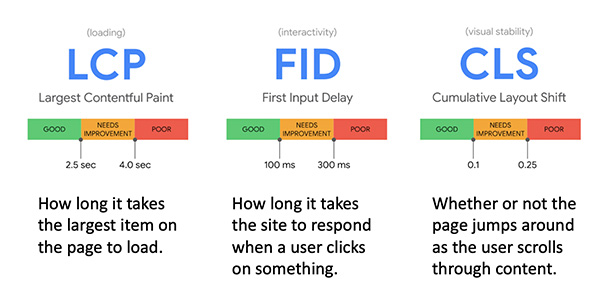There are three major changes coming to digital marketing in the next nine months and marketers are rightfully wary. Actually…scratch that. Most digital marketers are actually freaking out and scrambling for solutions, and it turns out there’s no easy fix. All three changes will in some way dramatically upheave habits and strategies that digital marketers have relied on for ages. And more importantly, they will negatively impact marketing results…from conversion data and targeting options to website speed and search engine results page ranking.
Did I just make you freak out too? Sorry. But ignoring these three major changes and/or hoping they don’t apply to you is not a smart move. Ignorance may be bliss, but when your sales tank…believe me, you’ll be feeling anything but blissful.
Here’s a clear overview of what’s coming. It’s not EVERYTHING, but it covers the critical highlights and offers links to more in-depth information about each one. It should be enough for you to check in with your webmasters and marketing folks to be sure you’ve got a plan to address them.
iOS 14 Update – Coming Spring 2021
![]()
Biggest headline: At some point soon (likely with the iOS 14.5 update, and likely the week of April 26), iOS will require all third-party apps to offer an opt-in prompt (see above image) that allows users to choose whether or not they agree to being tracked. Also, the conversion tracking window is dropping from 28-days to 7-days, which will make your conversion metrics grossly inaccurate. Hotel decision-to-book processes are not often contained within seven days.
Impact on your marketing: This impacts Facebook, Instagram, LinkedIn and more. Facebook is the biggest worry, especially if you’re using the Facebook pixel or doing any type of targeting or retargeting that relies on tracking in some way. The wide swath of iOS (iPhone) users who opt out of tracking will now be an unreachable audience for tailored marketing. This will reduce your advanced targeting options, as hyper-personalization and targeting lookalike audiences won’t be possible.
The iOS update will also result in inaccurate conversion data. A large portion of your audience will now be untrackable, both because of the opt-out AND reduced conversion tracking window. Note: you likely won’t see the impact as instantly as flipping a light switch. People update their settings on their own time – many take months before doing it – so expect this to feel like a quick slap and then a slow burn of increasing opt-outs over time.
Learn more here:
- Quick simple summary of what’s happening and an overview of stuff you can do about it.
- A deeper dive, with very specific steps on some solutions you can implement.
Google Page Experience Update/Core Web Vitals – coming Summer 2021

Biggest headline: Page speed, which measures how fast your website loads and is ready for interaction when a user first tries to access it, will play an even greater role in a website’s Google search engine ranking. A new suite of metrics called Core Web Vitals (CWV) will measure the elements of your site that are impacting its speed (see the three CWVs in the image above). If things are out of whack, the report on your Google Search Console (also available at PageSpeed Insights) will tell you precisely what needs to be fixed in order to pass the CWV assessment.
Impact on your marketing: Google plans a staggered rollout of this update starting mid-June 2021, with full completion by the end of August. This is important, and you absolutely should correct any issues that are causing your site to fail a CWV assessment.
However, if you don’t have this done by June 15, the world won’t end. Page speed is definitely a prominent factor in how Google ranks your website (because page speed impacts user experience, which is of top concern to Google), but it’s still just ONE of many factors used to determine that ranking. Your site won’t get buried instantly because of a CWV fail. In fact, Google has made it clear that relevant content still beats page speed in terms of ranking. So even if your CWV are subpar, if you have excellent, interesting, unique, and effective content for searchers, your website can still rank high in search results.
However… do pay attention to your CWV because Google makes it crystal clear what you need to fix if you don’t pass. Why allow fixable items to drag your page speed down? Pro tip -> check your CWV after you do any major content update to be sure nothing uploaded knocked your CWV out of whack.
Learn more here:
- Clear explanation of Page Experience Update & CWV.
- Why the heck is Google doing this? Here’s why.
- All about the new Page Experience Report on Google Search Console.
- Check your own CWV by going to PageSpeed Insights and typing your website into the search bar. Your CWV assessment (“passes” or “does not pass”) will be clearly shown right under your site speed score.
- A deeper dive explanation about what kind of changes you can make to impact CWV.
- If you don’t pass a CWV assessment, you should ask your web developer and/or marketing team to address the specific fixes needed. If you’re a bit of a techie and want to see how an audit of your CWV is performed, here’s how it goes down.
Cookies Changing to FLoC on Google Chrome – coming 2022
Biggest headline: In 2022, Google Chrome will no longer allow websites to use third-party cookies, and it intends to replace them with a new approach called Federated Learning of Cohorts (FLoC). This means you’ll be able to track individuals ONLY while they’re on your own website. When they leave and go elsewhere, you can’t follow them around and lure them back with retargeting ads. Instead, you’ll be able to target “cohorts,” which are interest-based groups (sorted as such by Chrome) sufficiently large enough to maintain individual anonymity.
Impact on your marketing: If you’re doing any sort of tracking and retargeting on Google, this will impact you greatly. Google hasn’t released any information yet on how FLoC will work. We don’t know what advertising tools will be available, nor or any specific details that would help you gear up for the tactical change. But at the very least, this is going to force you to learn new methods/tools, upheave your conversion patterns, and disrupt formerly reliable marketing channels.
Google says its preliminary trial data shows that using cohorts leads to similar results and advertisers can expect to see at least 95% of the conversions per dollar spent when compared to cookie-based advertising. But so far, they’ve shown no proof and leading digital marketing authorities are rightfully skeptical. So basically…we don’t know much but we know it’s coming.
Learn more here:
There’s only one article here because concrete info isn’t available yet, but here’s the most up-to-date overview (at the time of this posting) of what’s going on with FLoC.
OK, that’s a lot to absorb. These three major changes coming to digital marketing are a BIG deal and can be daunting to consider. So if you need a quick palate cleanser for your brain, check out our past blog posts about the marketing power of biscuits and bunnies.
 get travel marketing tips
get travel marketing tips 




